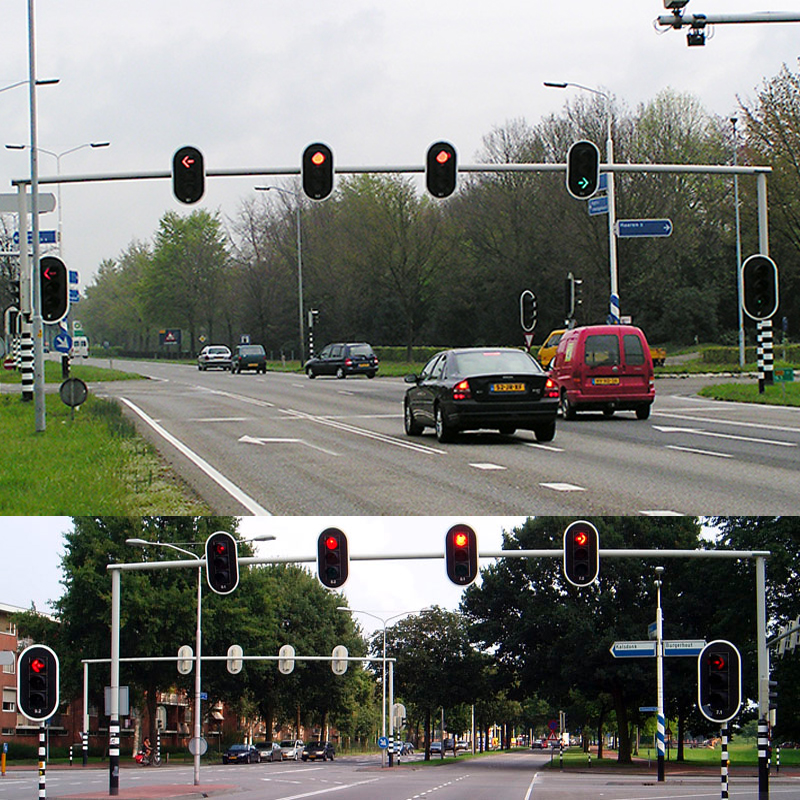Traffic lights are a ubiquitous feature of the modern urban landscape and are an important tool for regulating traffic flow and ensuring the safety of drivers and pedestrians. These simple yet effective devices play a vital role in maintaining order on the roads and their importance cannot be overstated. In this article, we’ll look at five key reasons why traffic lights are vital to the smooth operation of our roads.
1. Safety:
One of the main reasons traffic lights exist is to ensure the safety of all road users. By controlling the flow of traffic at intersections, traffic lights help prevent accidents and minimize the risk of collisions. Without traffic lights, the chaotic nature of intersections would make it difficult for drivers to navigate busy intersections, leading to an increased likelihood of accidents. The presence of traffic lights provides clear and unambiguous signals to drivers, pedestrians and cyclists, reducing the potential for confusion and improving the overall safety of the road.
2. Traffic management:
Traffic lights are crucial for managing the flow of traffic at intersections, ensuring smooth and efficient traffic. By allocating rights of way to different traffic flows, traffic lights help prevent blockages and congestion, especially during rush hours. Without the guidance of traffic lights, intersections can quickly descend into chaos, with vehicles competing for space and causing significant delays. Strategically placed traffic lights at key intersections keep traffic flowing in an orderly manner, minimizing disruption and keeping roads clear.
3. Pedestrian safety:
In addition to regulating vehicle traffic, traffic lights also play a vital role in ensuring pedestrian safety. Crosswalks equipped with traffic lights provide pedestrians with a designated time to cross safely, protecting them from oncoming vehicles. This is particularly important in busy urban areas where foot traffic is high and the risk of pedestrian accidents is high. Traffic lights at crosswalks help create a safe environment for walkers, giving them the confidence to travel on the road without fear of being hit by a vehicle.
4. Reduce conflicts:
Traffic lights are designed to minimize conflicts between different traffic flows, thereby reducing the likelihood of accidents and improving overall traffic flow. By clearly indicating when it is safe to drive and when to stop, traffic lights help prevent ambiguous situations that can lead to collisions. This is particularly important at complex intersections where multi-lane traffic converges and where pedestrians and cyclists interact with vehicular traffic. The presence of traffic lights helps create a structured and organized environment, reducing the likelihood of conflicts between different road users.
5. Enforcement:
Traffic lights serve as a form of automated enforcement to ensure that all road users obey the rules of the road. Traffic lights help enforce traffic rules and maintain order on the road by clearly indicating when to stop and when to continue. This is particularly important in areas where manual enforcement by law enforcement officers may be impractical or inadequate. The presence of traffic lights sends a clear message that compliance with traffic laws is non-negotiable and helps create a culture of safe and responsible driving.
In short, traffic lights are an integral part of modern transportation infrastructure and play a vital role in ensuring road safety and efficiency. Traffic lights help maintain the overall order and functionality of urban environments by managing traffic flow, protecting pedestrians, reducing conflicts and enforcing traffic laws. As we continue to navigate the complexities of modern transportation, the importance of traffic lights in maintaining safe and organized roadways cannot be overstated.
Welcome to contact traffic light manufacturer Qixiang to get a quote, we will provide you with the most suitable price, factory direct sales.
Post time: Jul-03-2024







